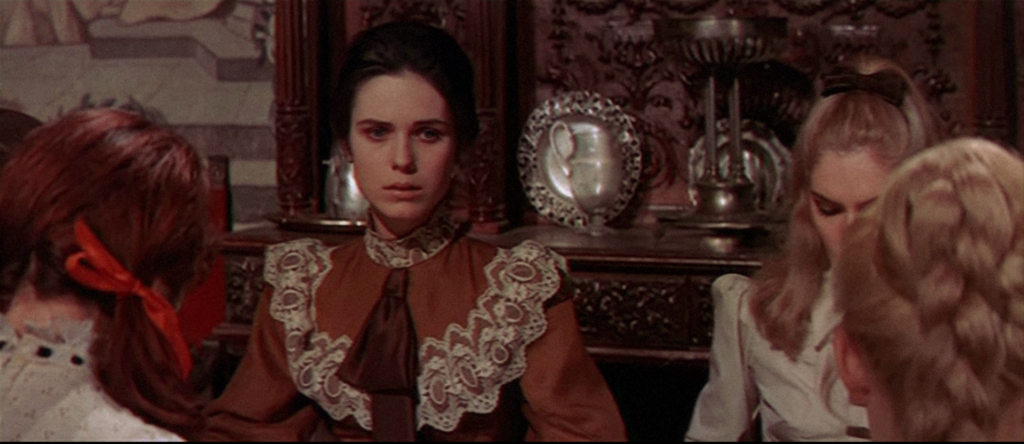
In the materials accompanying Shout! Factory’s blu-ray release of The House That Screamed (1969) they suggest that this film was a major influence on Dario Argento’s Suspiria (1977). I personally am unsure how true this is but it does seem rather likely since there are more than a few similarities between the two films.
One of the fundamental differences is that The House That Screamed doesn’t sustain any explicit stylization. Narciso Ibáñez Serrador, who wrote and directed The House That Screamed, is far more traditional about how he structures his narrative and much more concerned with giving his characters ample depth. Irene Tupan (Mary Maude) is a far more complex and therefore compelling character than any inhabitant of an Argento film (to be fair Argento’s concerns lie elsewhere). Tupan’s “kinky” relationship with headmistress Fourneau (Lilli Palmer) is a terrific example of queer innuendo. The acts of humiliation that Tupan carries out against Teresa (Cristina Galbo) echo Tupan’s own relationship with Fourneau, but in this case innuendo is exchanged for scenes of explicit emotional violence. In the third act, when Tupan turns away from Fourneau and assumes the role of the film’s protagonist only to die suddenly offscreen, Serrador has successfully subverted expectations and killed off the second most compelling character in the film.
By far the best character is Fourneau. Lilli Palmer takes this archetypal role of sadistic headmistress and imbues it with that indescribable quality that allows the performance to transcend the material. Serrador’s structure of the film depends on this kind of performance which is why he is able to successfully craft a horror film that is equal parts a character study.
The connection to Argento comes from the scenes of murder; Serrador makes use of slow motion and freeze frames in these moments when boarding school girls have their throats slit open. Both of these technical devices are prevalent in the much more widely seen films of Argento and are thus closely associated with the director’s signature style. In The House That Screamed these scenes of violence are purposefully jarring though nonetheless not as nearly as effective at promoting “chills and thrills” as the foreboding atmosphere that runs throughout the film’s dramatic scenes.
It’s a shame that American International Pictures botched their promotion and distribution of The House That Screamed in the U.S. back in 1970. This is a great little horror film with a really depraved twist ending that totally and abruptly embraced camp which I love. The House That Screamed deserves a reappraisal and a place in the classic Gothic Horror canon.
